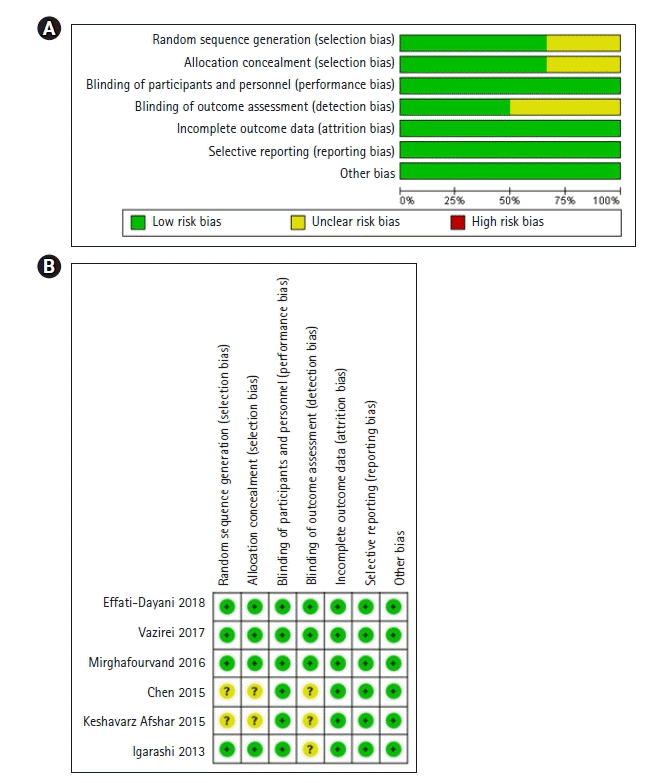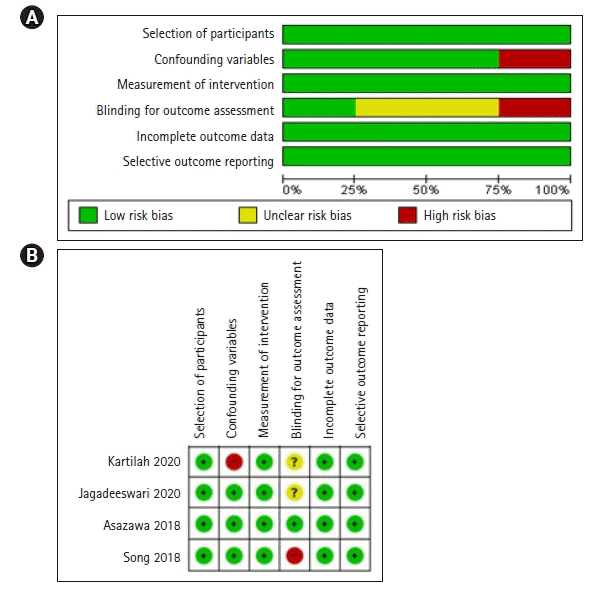2. Salme D, Hobrani P, Salari P, Banafshe E. Fatigue in pregnancy associated with postpartum blues. J Woman. 2014; 14:7–15.
3. Shobeiri F, Manoucheri B, Parsa P, Roshanaei G. Effects of counselling and sole reflexology on fatigue in pregnant women: a randomized clinical trial. J Clin Diagn Res. 2017; 11(6):QC01–QC04.
https://doi.org/10.7860/JCDR/2017/22681.9972.

4. Cheng CY, Chou YH, Wang P, Tsai JM, Liou SR. Survey of trend and factors in perinatal maternal fatigue. Nurs Health Sci. 2015; 17(1):64–70.
https://doi.org/10.1111/nhs.12149.

5. Cheng CY, Pickler RH. Perinatal stress, fatigue, depressive symptoms, and immune modulation in late pregnancy and one month postpartum. ScientificWorldJournal. 2014; 2014:652630.
https://doi.org/10.1155/2014/652630.

8. Andersen LB, Melvaer LB, Videbech P, Lamont RF, Joergensen JS. Risk factors for developing post-traumatic stress disorder following childbirth: a systematic review. Acta Obstet Gynecol Scand. 2012; 91(11):1261–1272.
https://doi.org/10.1111/j.1600-0412.2012.01476.x.

9. Plancoulaine S, Flori S, Bat-Pitault F, Patural H, Lin JS, Franco P. Sleep trajectories among pregnant women and the impact on outcomes: a population-based cohort study. Matern Child Health J. 2017; 21(5):1139–1146.
https://doi.org/10.1007/s10995-016-2212-9.

11. Yan S, Chen J, Zhang F. Infant sleep patterns and maternal postpartum fatigue: a cross-sectional study. J Obstet Gynaecol Res. 2022; 48(5):1193–1201.
https://doi.org/10.1111/jog.15191.

12. Okun ML. Sleep in pregnancy and the postpartum. In: Okun ML. Encyclopedia of sleep. Elsevier;2013. p. 674–679.
14. Asazawa K, Kato Y, Yamaguchi A, Inoue A. The effect of aromatherapy treatment on fatigue and relaxation for mothers during the early puerperal period in Japan: a pilot study. Int J Community Based Nurs Midwifery. 2017; 5(4):365–375.
15. Khayamim N, Bahadoran P, Mehrabi T. Relationship between fatigue and sleepiness with general health of mothers in the postpartum period. Iran J Nurs Midwifery Res. 2016; 21(4):385–390.
https://doi.org/10.4103/1735-9066.185580.

16. Aksu S, Varol FG, Hotun Sahin N. Long-term postpartum health problems in Turkish women: prevalence and associations with self-rated health. Contemp Nurse. 2017; 53(2):167–181.
https://doi.org/10.1080/10376178.2016.1258315.

19. Varney E, Buckle J. Effect of inhaled essential oils on mental exhaustion and moderate burnout: a small pilot study. J Altern Complement Med. 2013; 19(1):69–71.
https://doi.org/10.1089/acm.2012.0089.

20. Buckle J, Ryan K, Chin KB. Clinical aromatherapy for pregnancy, labor and postpartum. Int J Childbirth Educ. 2014; 29(4):21–27.
22. Karadag E, Samancioglu Baglama S. The effect of aromatherapy on fatigue and anxiety in patients undergoing hemodialysis treatment: a randomized controlled study. Holist Nurs Pract. 2019; 33(4):222–229.
https://doi.org/10.1097/HNP.0000000000000334.

23. Farahani MA, Afsargharehbagh R, Marandi F, Moradi M, Hashemi SM, Moghadam MP, et al. Effect of aromatherapy on cancer complications: a systematic review. Complement Ther Med. 2019; 47:102169.
https://doi.org/ 10.1016/j.ctim.2019.08.003.

24. Gok Metin Z, Ozdemir L. The effects of aromatherapy massage and reflexology on pain and fatigue in patients with rheumatoid arthritis: a randomized controlled trial. Pain Manag Nurs. 2016; 17(2):140–149.
https://doi.org/10.1016/j.pmn.2016.01.004.

26. Hur MH, Hong JH, Yeo S. Effects of aromatherapy on stress, fructosamine, fatigue, and sleep quality in prediabetic middle-aged women: a randomised controlled trial. Eur J Integr Med. 2019; 31:100978.
https://doi.org/10.1016/j.eujim.2019.100978.

28. Coleman Smith V. Aromatherapy as a comfort measure: during the childbearing year. Int J Childbirth Educ. 2012; 27(3):26–30.
29. Song J, Park MY, Jung EY. The effect of aroma hand massage on stress, fatigue and depression among mothers in the postpartum period. J Korean Soc Wellness. 2018; 13(3):389–398.
https://doi.org/10.21097/ksw.2018.08.13.3.389.

30. Keshavarz Afshar M, Behboodi Moghadam Z, Taghizadeh Z, Bekhradi R, Montazeri A, Mokhtari P. Lavender fragrance essential oil and the quality of sleep in postpartum women. Iran Red Crescent Med J. 2015; 17(4):e25880.
https://doi.org/10.5812/ircmj.17(4)2015.25880.

31. Effati-Daryani F, Mohammad-Alizadeh-Charandabi S, Mirghafourvand M, Taghizadeh M, Bekhradi R, Zarei S. Effect of lavender cream with or without footbath on sleep quality and fatigue in pregnancy and postpartum: a randomized controlled trial. Women Health. 2018; 58(10):1179–1191.
https://doi.org/10.1080/03630242.2017.1414101.

32. Kianpour M, Mansouri A, Mehrabi T, Asghari G. Effect of lavender scent inhalation on prevention of stress, anxiety and depression in the postpartum period. Iran J Nurs Midwifery Res. 2016; 21(2):197–201.
https://doi.org/10.4103/1735-9066.178248.

33. Higgins JP, Thomas J, Chandler J, Cumpston M, Li T, Page MJ, et al. Cochrane handbook for systematic reviews of interventions. Chichester, UK: John Wiley & Sons;2019. p. 3–640.
34. Igarashi T. Physical and psychologic effects of aromatherapy inhalation on pregnant women: a randomized controlled trial. J Altern Complement Med. 2013; 19(10):805–810.
https://doi.org/10.1089/acm.2012.0103.

35. Chen SL, Chen CH. Effects of lavender tea on fatigue, depression, and maternal-infant attachment in sleep-disturbed postnatal women. Worldviews Evid Based Nurs. 2015; 12(6):370–379.
https://doi.org/10.1111/wvn.12122.

36. Mirghafourvand M, Charandabi SMA, Hakimi S, Khodaie L, Galeshi M. Effect of orange peel essential oil on postpartum sleep quality: a randomized controlled clinical trial. Eur J Integr Med. 2016; 8(1):62–66.
https://doi.org/10.1016/j.eujim.2015.07.044.

37. Vaziri F, Shiravani M, Najib FS, Pourahmad S, Salehi A, Yazdanpanahi Z. Effect of lavender oil aroma in the early hours of postpartum period on maternal pains, fatigue, and mood: a randomized clinical trial. Int J Prev Med. 2017; 8:29.
https://doi.org/10.4103/ijpvm.IJPVM_137_16.

38. Asazawa K, Kato Y, Koinuma R, Takemoto N, Tsutsui S. Effectiveness of aromatherapy treatment in alleviating fatigue and promoting relaxation of mothers during the early postpartum period. Open J Nurs. 2018; 8(3):196–209.
https://doi.org/10.4236/ojn.2018.83017.

39. Jagadeeswari J, Soniya M. Effectiveness of aromatherapy on after pain and fatigue among postnatal mothers. Drug Interv Today. 2020; 13(7):1084–1088.
40. Kartilah T, Februanti S. Effectiveness of progressive muscle relaxation and aromatherapy on fatigue in pregnant mothers. Medisains, J Ilm Ilmu-Ilmu Kesehat. 2020; 18(1):14–18.
https://doi.org/10.30595/medisains.v18i1.6421.

41. Rezaie-Keikhaie K, Hastings-Tolsma M, Bouya S, Shad FS, Sari M, Shoorvazi M, et al. Effect of aromatherapy on post-partum complications: a systematic review. Complement Ther Clin Pract. 2019; 35:290–295.
https://doi.org/ 10.1016/j.ctcp.2019.03.010.

45. Fujita K, Chavasiri W, Kubo I. Anti-salmonella activity of volatile compounds of Vietnam coriander. Phytother Res. 2015; 29(7):1081–1087.
https://doi.org/10.1002/ptr.5351.

48. Dos Reis Lucena L, Dos Santos-Junior JG, Tufik S, Hachul H. Lavender essential oil on postmenopausal women with insomnia: double-blind randomized trial. Complement Ther Med. 2021; 59:102726.
https://doi.org/10.1016/j.ctim.2021.102726.

49. Dobetsberger C, Buchbauer G. Actions of essential oils on the central nervous system: an updated review. Flavour Fragr J. 2011; 26(5):300–316.
https://doi.org/10.1002/ffj.2045.

50. Ngo-Mback MN, Babii C, Jazet Dongmo PM, Kouipou Toghueo MR, Stefan M, Fekam Boyom F. Anticandidal and synergistic effect of essential oil fractions from three aromatic plants used in Cameroon. J Mycol Med. 2020; 30(2):100940.
https://doi.org/10.1016/j.mycmed.2020.100940.

51. Tsai SY, Lin JW, Kuo LT, Thomas KA. Daily sleep and fatigue characteristics in nulliparous women during the third trimester of pregnancy. Sleep. 2012; 35(2):257–262.
https://doi.org/10.5665/sleep.1634.

52. Mascarenhas VHA, Caroci-Becker A, Riesco ML. Effectiveness of aromatherapy versus standard care on physiological and psychological symptoms in pregnant women: a systematic review protocol. JBI Evid Synth. 2021; 20(2):658–665.
https://doi.org/10.11124/JBIES-20-00562.





 PDF
PDF Citation
Citation Print
Print







 XML Download
XML Download